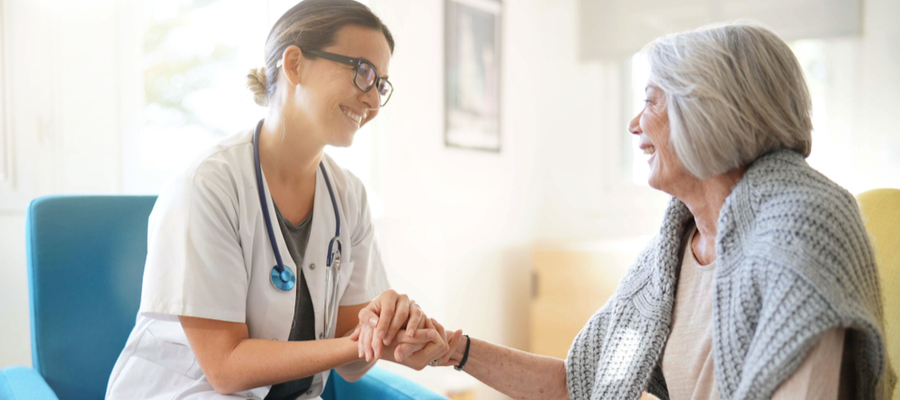If anything, the COVID-19 pandemic is demonstrating how older adults need innovative, 21st-century solutions to stay safe and healthy while accessing reliable medical care. Today’s obstacles to do just that are enormous given the current Canada-wide directive for social distancing, coupled with the restrictive and limited capacity of healthcare services.
As we struggle through the pandemic of 2020, it’s an opportune time to consider new ways for the cohort of older North Americans, which is expected to double by 2029, to set up healthcare services we can rely on as we age in place.
That’s where the ingenious start-up LocateMotion comes in. Right now LocateMotion is about to run trials in Canada to observe and perfect how its cutting-edge, 21st-century health intelligence service allows older adults to remain connected to healthcare providers, family and friends while having our health and movement data monitored in our homes for as long as we wish to age in place.
Rather than dashing off to various doctors’ appointments, LocateMotion remotely connects us with healthcare providers without forcing us to leave our homes, or to wait on hold for hours as we try to connect with government health lines. I can only imagine how useful this service could be, as the Corona Virus takes its toll, and not just on physical health, but mental health as well.
I spoke with Aamir Sardar, LocateMotion’s Managing Partner and Allan Brown, Director of Partnerships at the company, who talked to me about how the start-up operates and who can benefit most from it. Brown describes it this way: “LocateMotion is a health intelligence platform solution that helps older adults age in place with the assistance of emerging technologies. It assists patients aged 65 +, typically with chronic conditions, who wish to remain at home” rather than in long-term care facilities.
By introducing “ambient assisted living,” that is, by adding the LocateMotion application to smart sensors and wearable devices, such as a smartwatch or motion bracelet, LocateMotion can monitor clients’ daily activities and health statistics. It can create a daily insight report with problem detection communicated directly to family and friends, EMS or the regular doctor or caregiver.
The application is device and network agnostic, meaning that it can work with:
- Smartphones (ios, android)
- Wearables (apple, Samsung, 4g, Fitbit)
- IoT Sensors (door, wifi, sleep etc.)
- Medical Devices (blood pressure, blood sugar, etc.)
As Aamir Sardar emphasizes, “LocateMotion addresses the huge need to provide remote care capability while predicting and preventing problems based on data observation and analysis.”
It’s particularly useful for early dementia patients since it solves the problem of patient wandering by setting up a virtual fence of detection if the person wanders away from a specific geographic area.
The application immediately detects falls or stumbles, one of the major concerns for ageing adults. The other primary concern it addresses is easy access to health care. Most of us have had the disappointing experience of visiting our doctor when the actual appointment lasts for five minutes. What could efficiently be done virtually takes a considerable chunk out of our day, as well as causing transportation issues for some adults.
Despite many medical practitioners who now wish to communicate with patients remotely, currently, doctors cannot claim remote visits through OHIP, or other provincial health care plans, unless the patient is seen in person —so most of our doctors insist that we visit them in their offices to obtain simple and straightforward health monitoring, advice or prescriptions. What if much of this work was accomplished remotely? Additionally, what if we had a concierge service that connected directly, through a button on a smartwatch, to grocery delivery or to a ride service company?
What LocateMotion does is make it possible to rely on a 21st-century health intelligence solution that would allow our physicians to assist us remotely. “Instantaneously, health care providers could have access to statistical updates such as blood pressure and pulse rate. “The application tracks data that creates a comprehensive user profile. If there’s something wrong, it can be predicted and addressed,” explains Sardar.
In light of the COVID-19 pandemic and the dire overcrowding of health care facilities, “it’s obvious how a remote health care technology could both take the burden from on-site care while helping older adults to manage their symptoms or concerns 24/7 during this difficult time,” adds Sardar.
For those living in self-isolation during the Corona Virus pandemic, or for those living alone, the monitor could provide a care circle, which includes health care providers –and family or friends who could also monitor the ageing adult. The technology allows us to stay home, but keeps us in touch, which ultimately leads to more independence and freedom for older adults, even during a time of pandemic.































